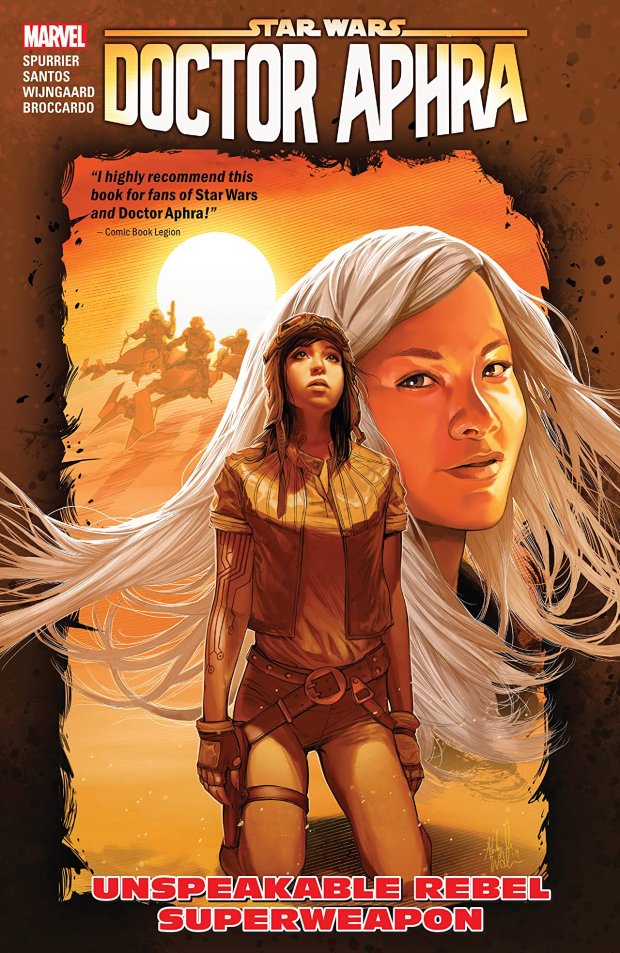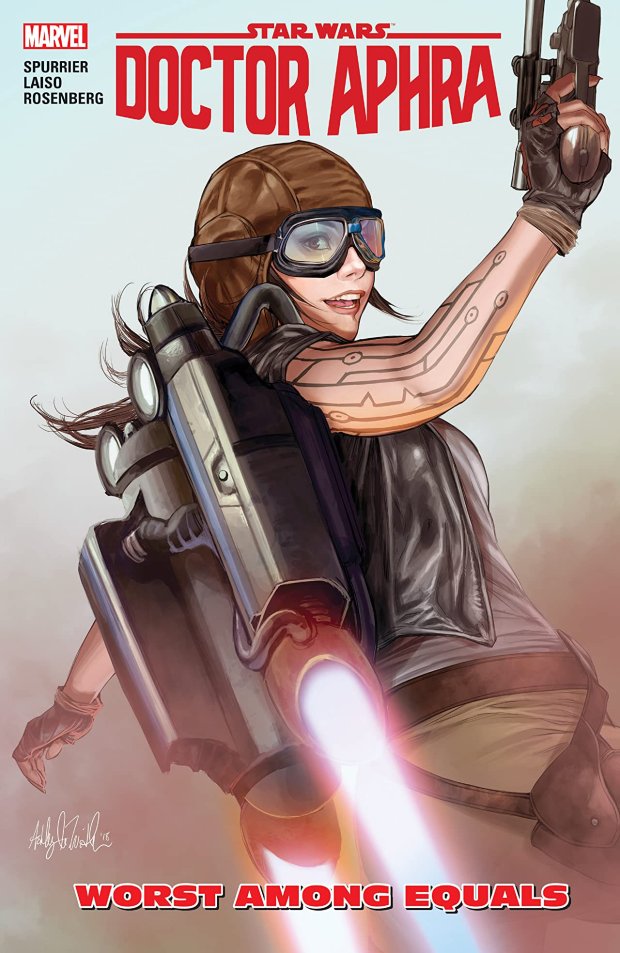by Simon Spurrier, Caspar Wijngaard, Lee Loughride, Joe Caramagna
collects Doctor Aphra #37-40 and Dr Aphra Annual #3
volume reviews one | two | three | four | five | six | seven [complete]
*spoilers for issues 37-39, which is all I made it through*
UGH! After a disappointing sixth volume I really hoped Spurrier would bring it all together in the final volume. NOPE.
Usually I will try to power through a disappointing book, especially one that’s been a favorite series of the year. But unfortunately, literally everything about this book is disappointing, and I would rather not come out of this disliking Doctor Aphra.
The volume picks up at the last book’s cliffhanger, with Aphra back in Vader’s service. Now, the Empire is trying to find the Rebels’ new hideout (if you’ve seen Empire, you know where this is going), and their pattern of hiding out in old Jedi temples makes archaeologists a perfect match to help hunt them down. It makes sense, but Aphra did better when her stories didn’t overlap with canon at all.
The book feels aimless even as characters from past books make appearances in an attempt to appear full-circle. Aphra makes decisions that make no sense, even for her heartless self (like leaving Valuuda alone on an abandoned planet), and conversations with her dad are too eager and feel hollow. Aphra and Tolvan’s scene together was a joke.
And the art is just atrocious. Far too cartoony for a Star Wars book, and there’s barely any nuance to facial expressions. Panels that require some drama and punch – like Vader choking Aphra’s father, Tovan blasting Aphra – all fall flat.
Spurrier really struggled with Aphra, and it’s disappointing that this final chapter really didn’t communicate a strong sense of Aphra’s character or deliver a satisfying story. I’m glad this rogue’s story has come to an end – bring on Alyssa Wong.


